To run the forums, host the website, and travel, I charge a universal service fee for my reviews. This review was sponsored by Aventon. My goal is to be transparent and unbiased, this video and written review are not meant to be an endorsement of Aventon products.
The Aventon Pace 350 is an affordable yet capable and versatile ebike which aims to give more bang for your buck versus other value priced offerings. The Pace 350 is a scaled down version of the Pace 500, so if you saw my review on that you will see a lot of parallel information. For example, like the Pace 500, it comes in both a step-through and a high-step, each with their own sizes and colors. You can find the step-through in small and medium sizes, while the high-step is available in a small, medium, and large frame. For $999 there is surprisingly a lot to look over, so let’s get in a little deeper. The Pace 350 is a comfortable and upright bike with a relaxed position for leisure riding or commuting. That comfort comes from a seat tube that is further back, swept back handlebars, and locking ergonomic grips. You also get this Velo comfort saddle with rubber bumpers underneath and some nice fairly thick high volume tires (27.5”x2.2”) which make for wider attack angle. Unfortunately, there is no suspension fork or seat post, but I am sure most wouldn’t be surprised given the cost of the bike. However, they do have a 30.4mm seat post on the step-through and 31.6mm seat post on the high-step if you want to swap those out with a cushier option. Also, the head tube itself is tapered, which is nice because that will open up some fork options for those looking for an upgrade. The bike itself is fairly lightweight with an aluminum alloy frame and fork, coming in at 46lbs total on the small frame. It’s a handsome bike with wrapped wires, some internally routed cables, and extra gussets adding a lot of attention to detail. Other features include rear rack bosses, fender bosses, kickstand (although it is centrally mounted which could produce pedal lock when reversing), reflective sidewall stripped tires, plastic chain guide, and a semi-integrated downtube battery. The real big wins on this bike though is in the price. Although you don’t get the 500 watt motor or the hydraulic disc brakes, so many of the other features are still here including the trigger throttle complete with motor inhibitors. At $999, I would say this is definitely in the affordable category, without succumbing to generic or no-name brakes or derailleur.
Driving the Pace 350 is a Shengyi 350 watt planetary gear hub motor. Since its planetary geared, it will freewheel a little more efficiently and not cause the drag you get from gearless motors. However, since it is a sealed 12 magnet cadence sensor, you will get a little more of that “on-off-on-off” feeling as you ride it. Since it has a sealed sensor, that means no gunk or debris getting lodged inside which is a nice feature. It may not be as zippy as the 500 watt version, but it does have a smoother ramp up and is pretty quiet. On the mechanical drivetrain of the bike, you will find an 7 speed Shimano Tourney sprocket versus the 8 speed Shimano Altus on the 500. Along with that is a 14-28 Shimano freewheel so the climbing may not be as good. Controlling everything is a set of trigger shifters (one way high, three-shift low) with a windowed gear display. For stopping, you have a nice set of Tektro mechanical disc brakes with 180mm rotors and three-finger levers with motor inhibitors.
Powering this ebike is a 36v 11.6ah lithium-ion battery with Samsung cells. The battery is a little more limited than the one found on the Pace 500, but the motor should be a power sipper, so it should even out well. This battery weighs a total of 6lbs. There is a USB port on the side, but it is not for charging, but rather for service diagnostics which serves a great purpose, but looking at it does serve as a constant reminder that a USB charging port may have been a missed opportunity. The charger is 1.3lbs and puts out 3amps of charging power, a bit faster than the standard 2amp chargers we are used to seeing. The battery is secured with lock and key and can be charged on or off the bike, but I do recommend charging indoors. To really care for this and other lithium-ion packs, I have heard that storing in a cool dry location vs. extreme heat or cold will extend the life, and try to keep it about 50% full when not using for long periods so you won’t stress the cells. Try not to let it run down to zero, because that’s really hard on the cell chemistry.
The cockpit controls are great, its nice to see levers for shifting instead of the usual thumb shifter. Most of this is possible since the throttle is on the left along with the display controls. On the right is your shifting levers as well as a gear display window. Right in the middle of the handlebars is the large and easy to read display. The display does have an adjustable angle, but is not removable which can sometimes leave you feeling insecure when parking it or leaving it to the elements. The display is grayscale and features a backlight for nighttime riding. To start the bike, press power on the battery, hold the M button to turn on display. The large display offers a wealth of information starting at the battery levels. The battery infographic is shown in 10 separate 10% intervals which does a better job of leaving guess work out compared to other bikes with 33% or even 20% steps. You can scroll through several modes of pedal assist (1-5) and can use the throttle on any as long as you get that pedal rotation in. Other display options include odometer, trip A, trip B, battery voltage, and a timer. Also, if you hold down the down arrow, you can engage a walk mode. There is a deep dive menu if you want to play with other various settings. Hold up and down arrows for a couple of seconds to initiate this menu of settings. Once inside, you will have access to backlight settings, unit readout, wheel size configuration, and top speed. To exit this menu, hold M to leave.
It’s hard to knock a bike with throttle, pedal assist, and a comfortable riding position that only cost $999. So much attention to detail is given but you can’t make a bike to please everybody so there are some tradeoffs to take into consideration. Little things here and there would be issues with the derailleur and some of the wires in the rear being a little exposed. This could be problematic if the bike is damaged in shipping or even dropped. There is no slap guard in the rear, so the chain could really do some damage to that paint, something that could annoy you especially if you got a color like Wine Red to stand out. I recommend covering it with some box tape or getting an aftermarket neoprene slap guard on Amazon. Its nice to have fender bosses, but unfortunately no bottle cage bosses this time. Also, for a commuting bike, I gotta say its a little disappointing they didn’t add battery intergraded lights for either the front or back. The biggest tradeoff however, would have to be the assembly. The bike is made to order through dealers or online, but if you have it delivered to your home, do be prepared. It can take an hour or more to assemble, so make sure you have some tools handy (although they do include some) and some free time. To help remedy this, Aventon does have a YouTube video that details assembly instructions for those looking for some extra help. Of course, you can also have your local dealer do it, or pay a local bike shop as well. To be honest however, when you look at the big wins like the comfortable ride, and then look at all the little touches like the thicker reflective tires, locking grips, and brand name components, its amazing that this bike comes in at such a great price. Tradeoffs considered, this bike would probably pleasantly surprise anyone looking at the more affordable options. A big thank you to Aventon for inviting me out and letting me see their bikes and their factory.
As always, I welcome questions and feedback in the comment section below. Whether you own a previous version of the bike, have taken a test ride, or are brand new to the space, my goal is to provide an objective and honest resource. You can also join the Aventon Ebike forums and share your own photos, videos, and review updates to help others! Have fun out there, and ride safe :)
Pros:
- An affordable ($999) yet capable and versatile ebike which aims to give more bang for your buck versus other value priced offerings
- Comes in both a step-through and a high-step, each with their own sizes and colors, you can find the step-through in Small and Medium sizes, while the high-step is available in a Small, Medium and Large frame
- A comfortable and upright bike with a relaxed position for leisure riding or commuting, seat tube is further back, bike has an adjustable angle stem, swept back handlebars, and locking ergonomic grips, also has Velo comfort saddle with rubber bumpers underneath and some nice fairly thick high volume tires (27.5”x2.2”) which make for wider attack angle
- The Pace 350 is a handsome bike with wrapped wires, some internally routed cables, and extra gussets adding a lot of attention to detail
- A lot of bonuses like rear rack bosses, fender bosses, kickstand, reflective sidewall stripped tires, plastic chain guide, and a semi-intergraded downtube battery
- It is equipped with a 350 watt motor for cadence based pedal assist and also a throttle rated for 20mph for leisure riding
- Great size for stopping with the 180mm Tektro mechanical disc brakes, also with motor inhibitors
- 36v 11.6ah battery with a 3amp charger, a little faster than the standard 2amp charger you usually see with value priced ebieks
- Large and easy to read display offers a lot of information as well as a deeper settings menu to really do some tweaks and adjustments
- A lot of value priced bikes have generic components however, many of the Pace 350 components are Shimano or Tektro, great to see a sub $1,500 bike without no-name parts
- The bike is sold online or through a dealer network and offers a 1 year warranty
Cons:
- No suspension in either the front fork or the seat, however they can be swapped out for cushier options if you want to compliment the relaxed riding geometry
- Although the battery in theory is capable of charging peripherals via USB, there is no such option, it would be nice to see some device charging in the future
- Additionally, batteries such as this are known for powering intergraded lights, another missed opportunity on this bike as it does not come with any in either the front or the rear
- Display is not removable so be careful when parking in the elements or in high crime areas
- Bottle cage bosses and slap guards are becoming common place in a lot of value priced bikes and this bike is without them, but I suppose you could add a aftermarket neoprene guard from Amazon and even get a handlebar mounted bottle holder if needed
- A minor grip but some of the derailleur and wires in the rear are a little exposed, this could be problematic if the bike is damaged in shipping or even dropped, make sure to take good care of it
- A decent amount of assembly is required, Aventon was nice enough to let me in their warehouse to take a look at the products being shipped out so make sure to check out the video if you want to get a good look at what is required, it does come with some tools and they have an instructional video on YouTube, or you could have a bike shop or mobile repair service assemble it if you are not comfortable
Resources:
- Official Site: https://www.aventon.com/




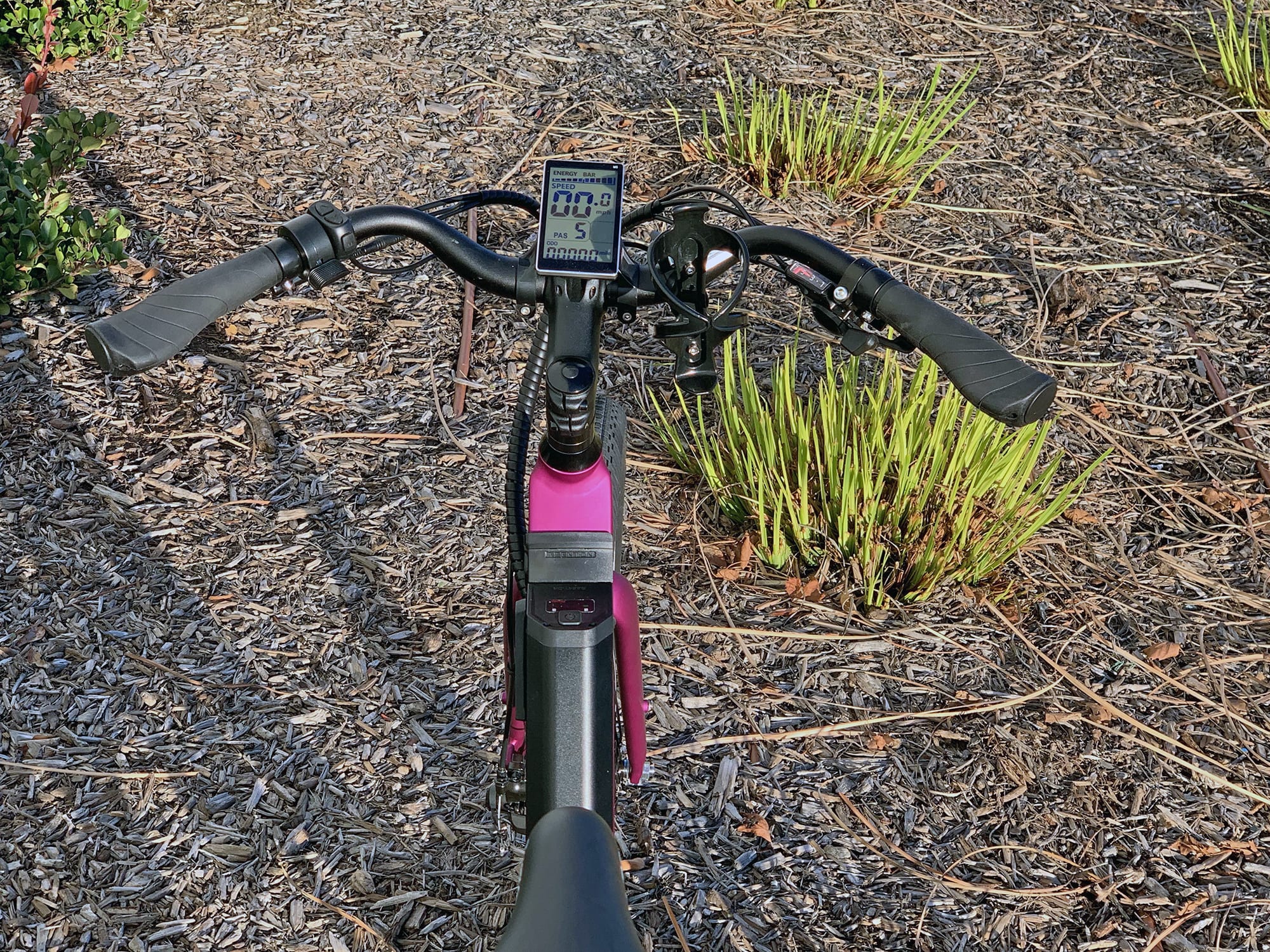
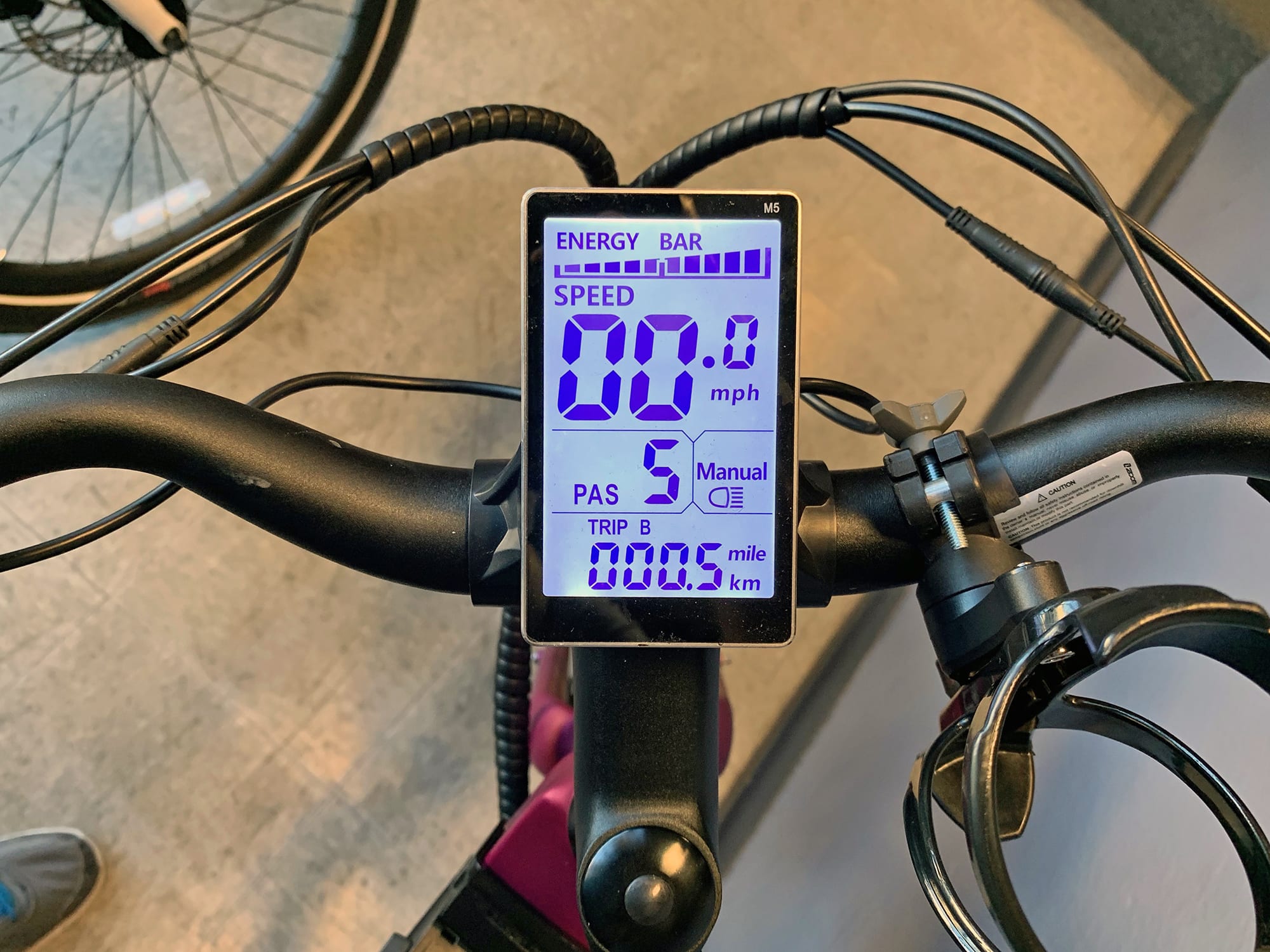
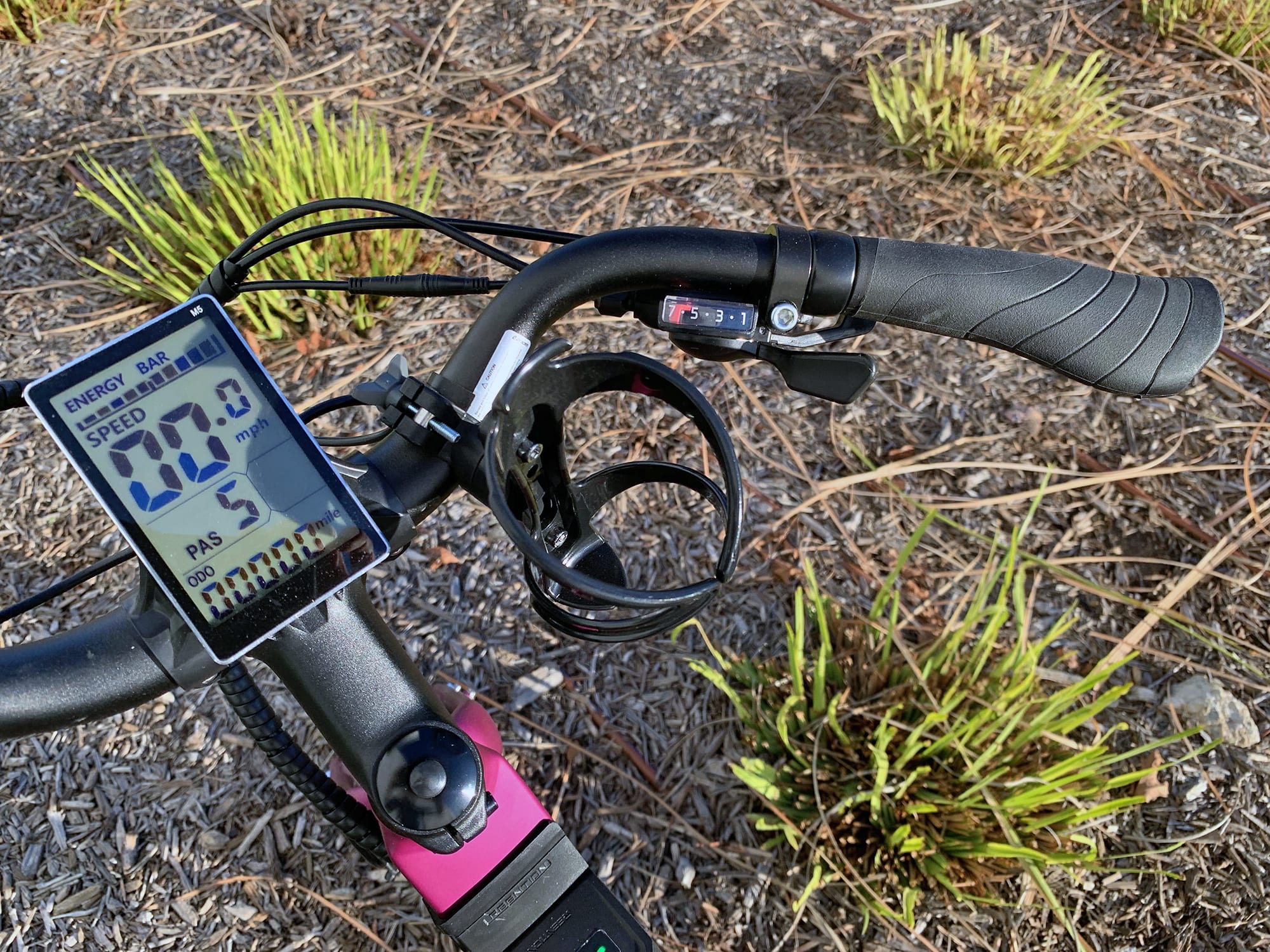

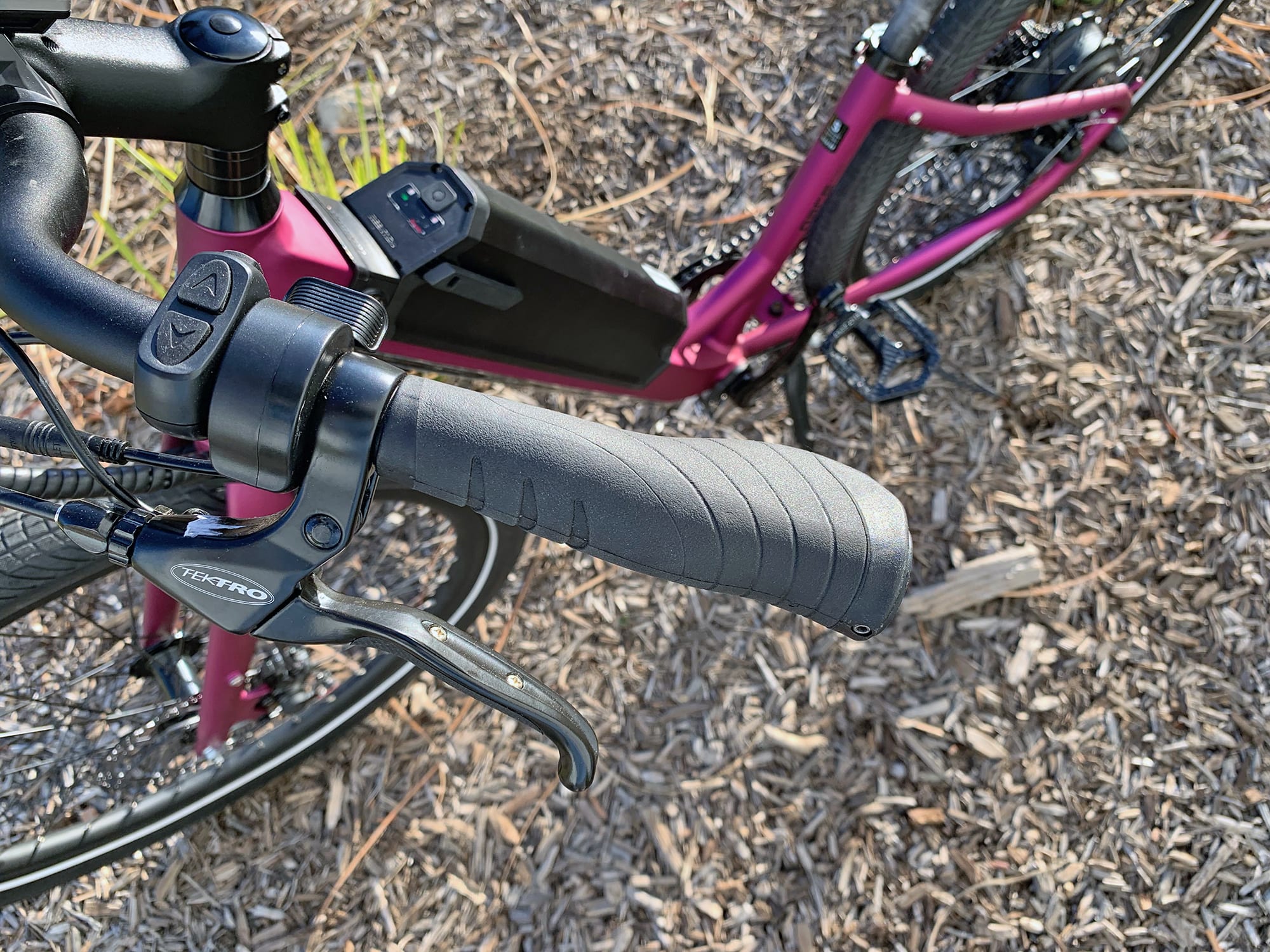

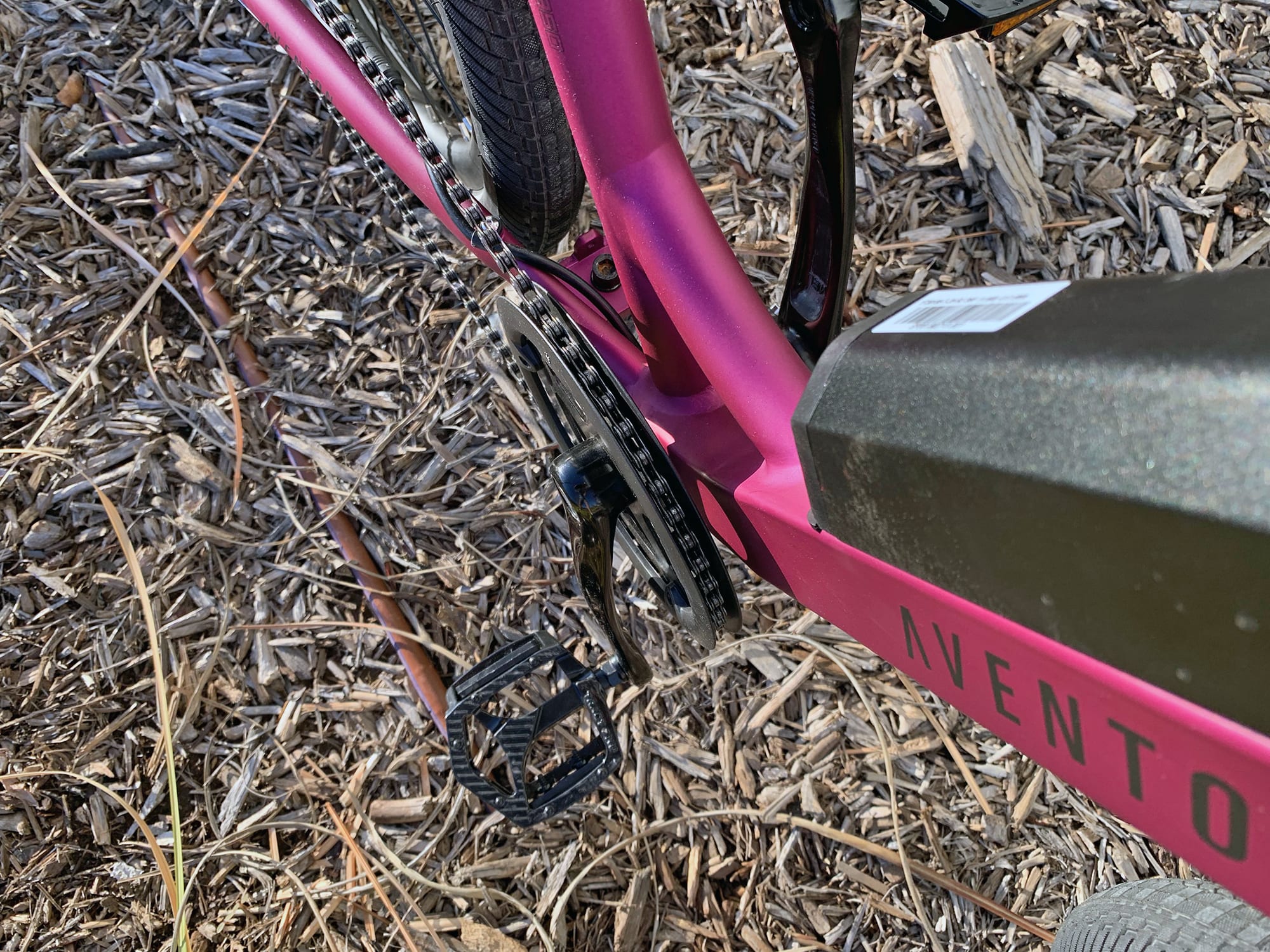
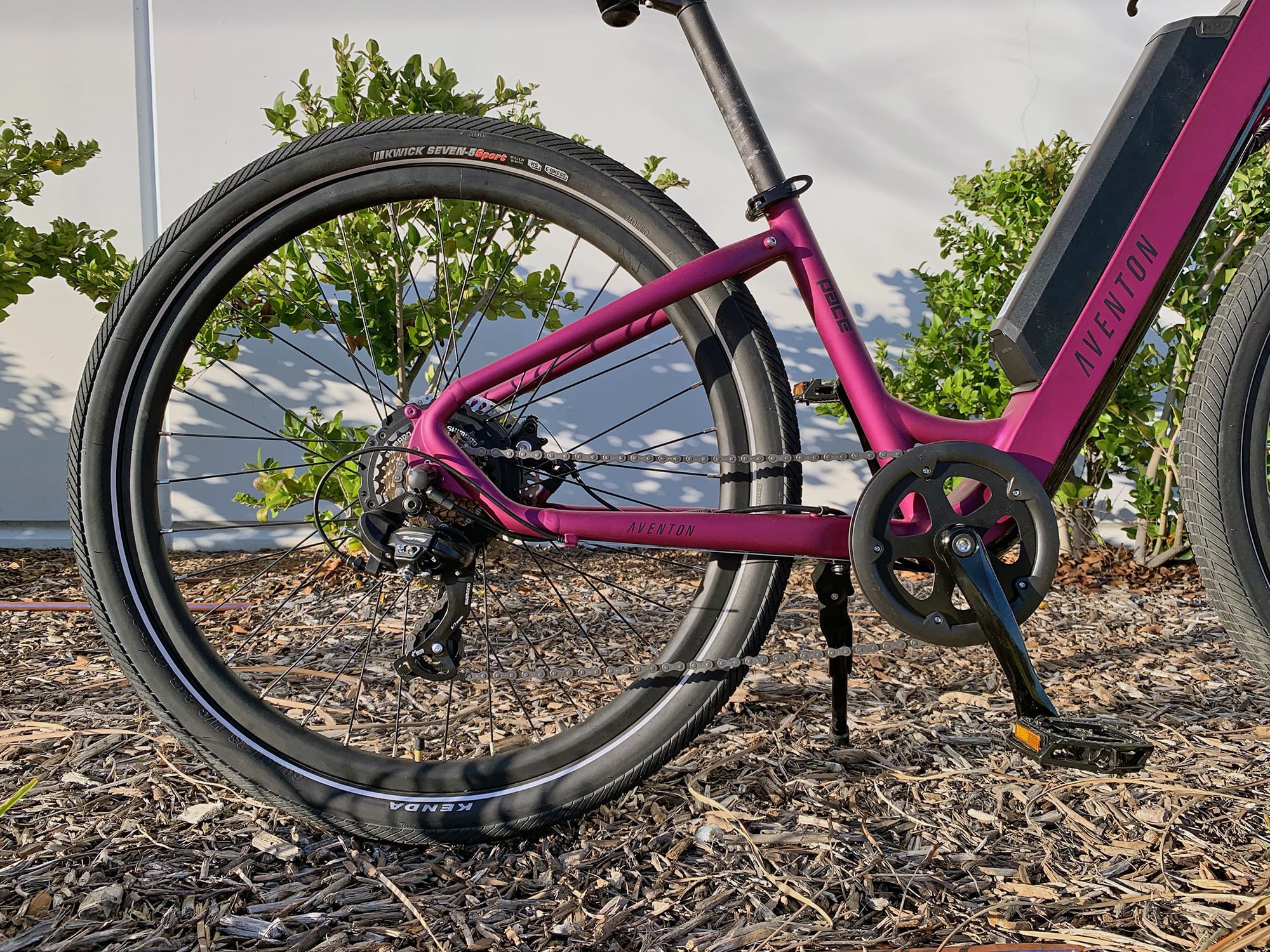

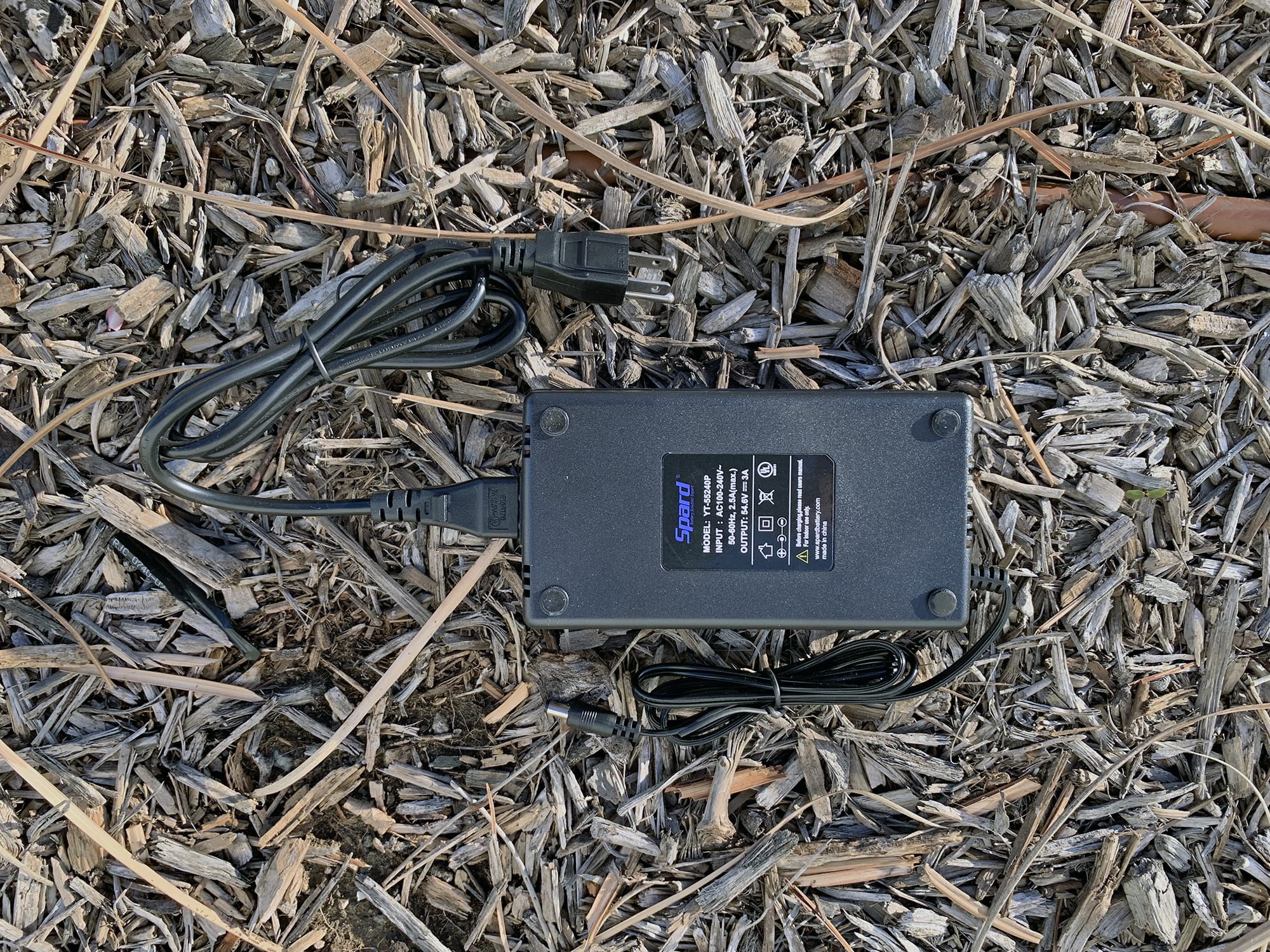
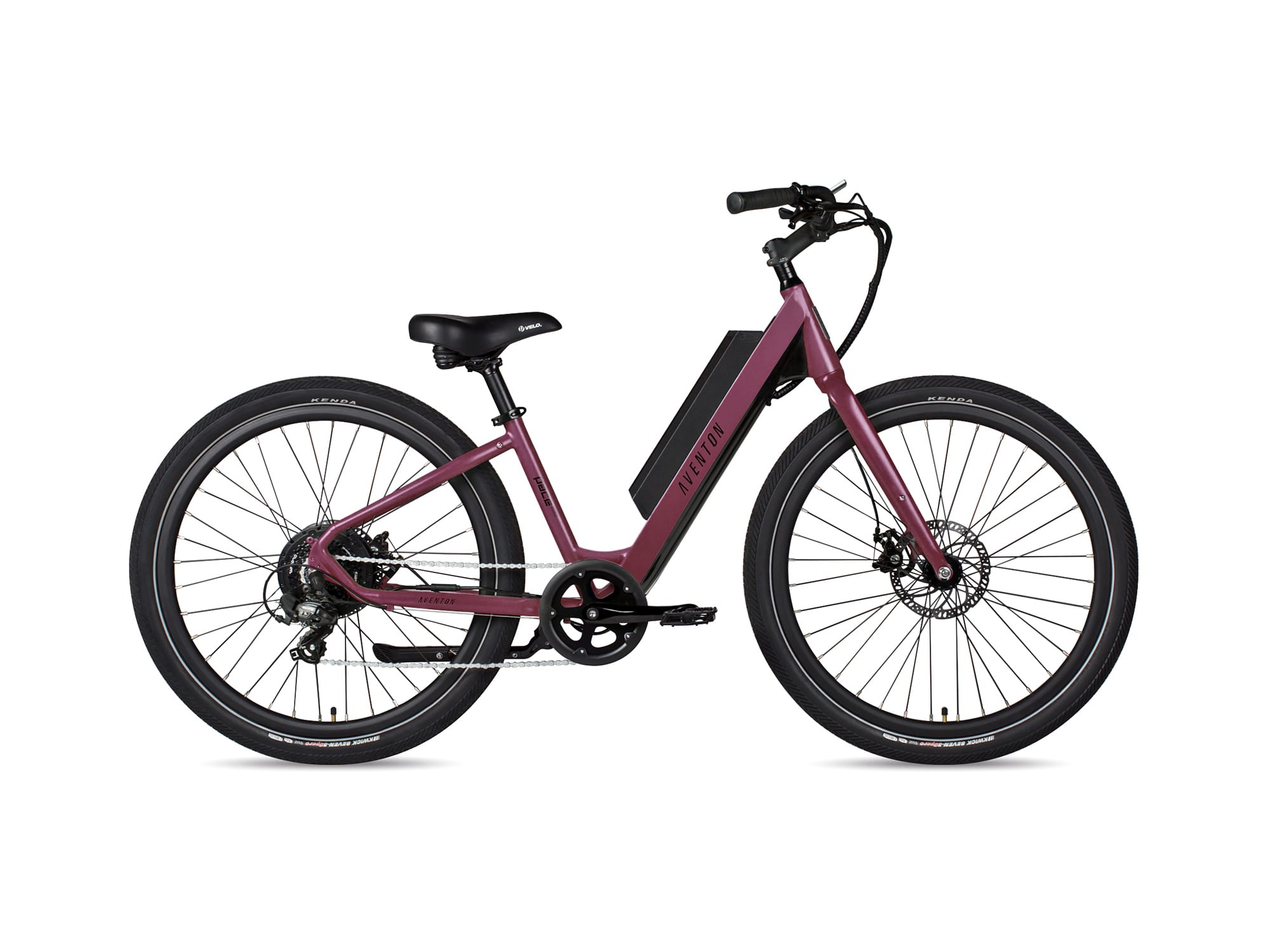


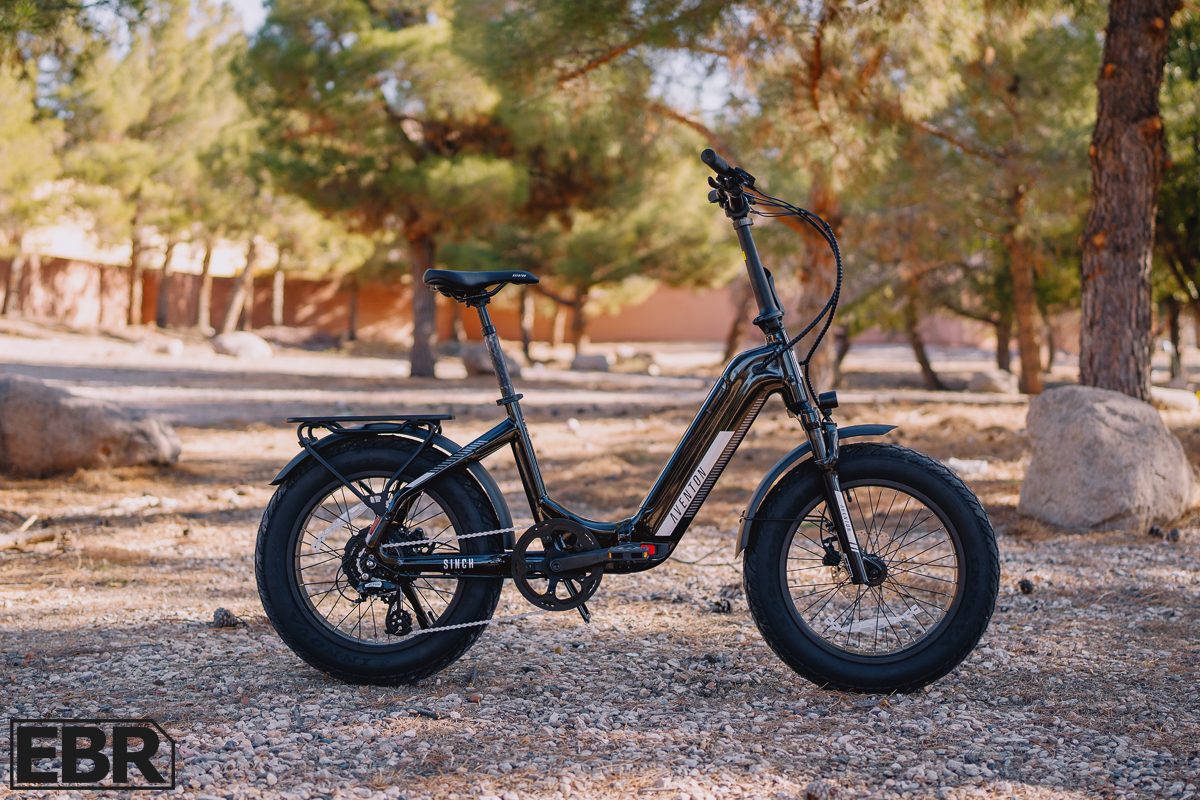
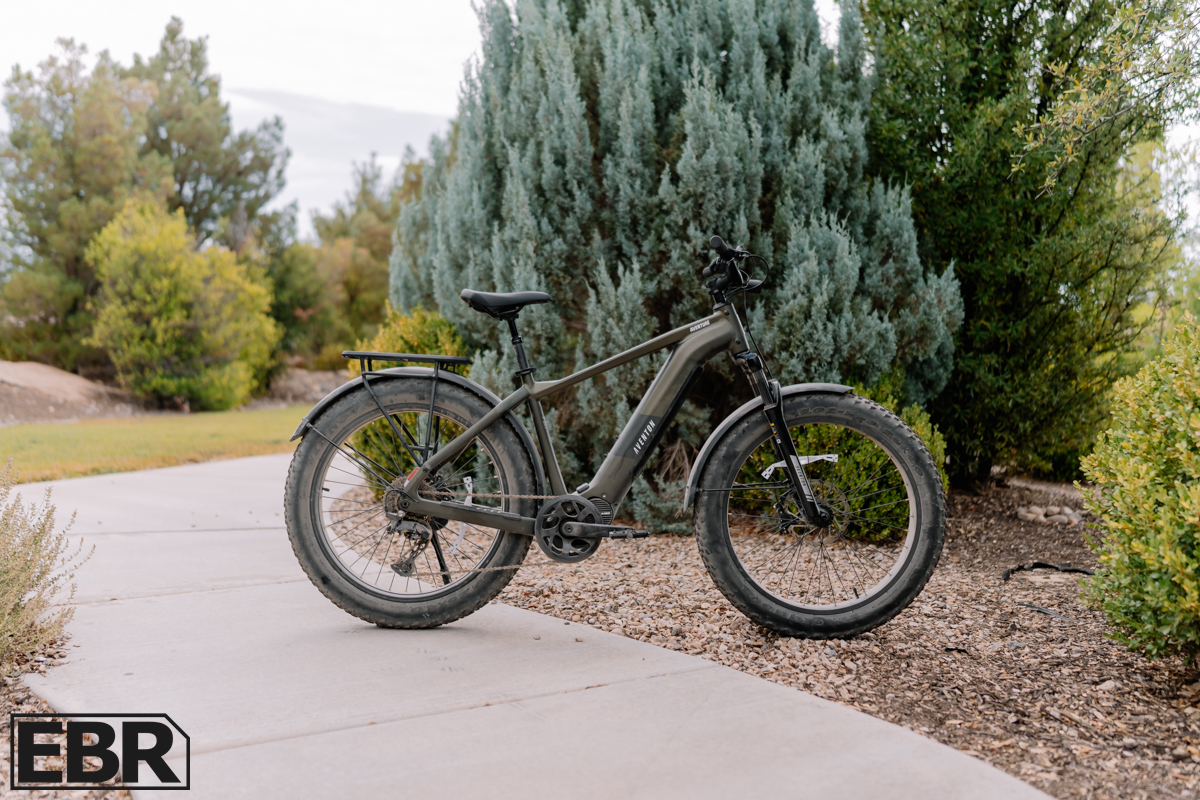
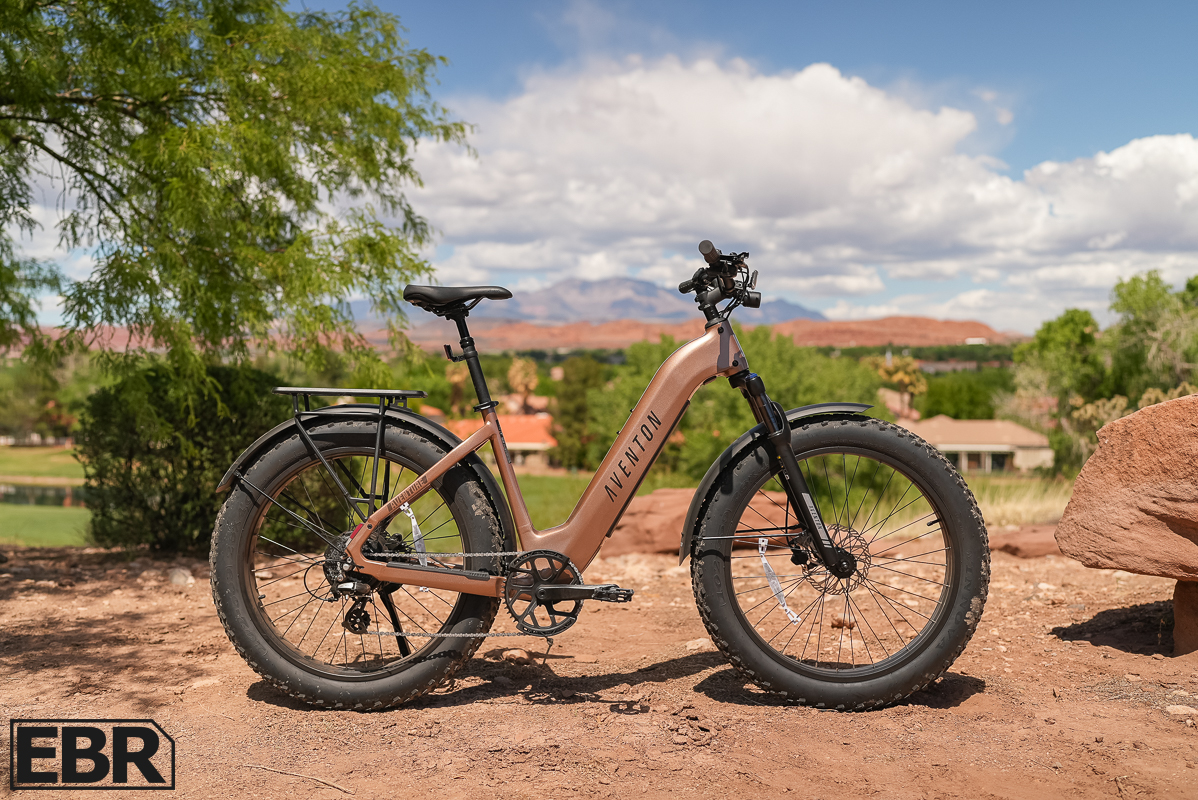


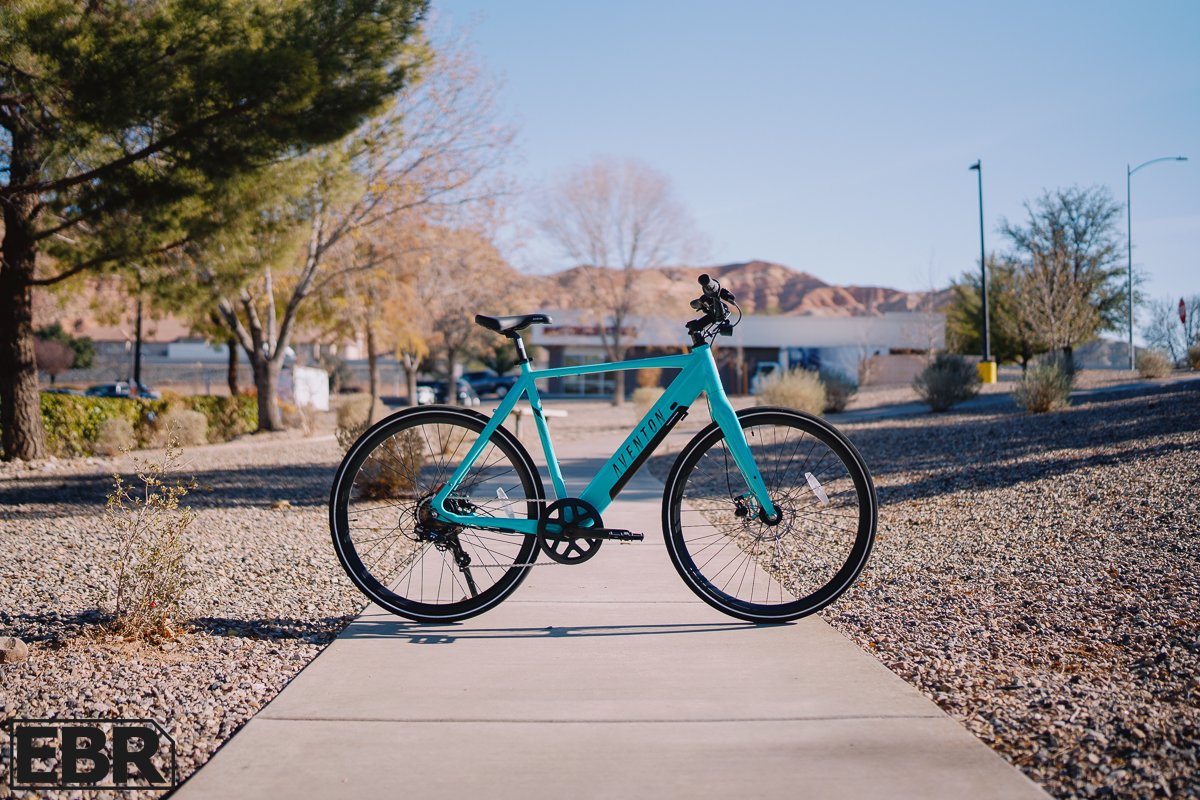
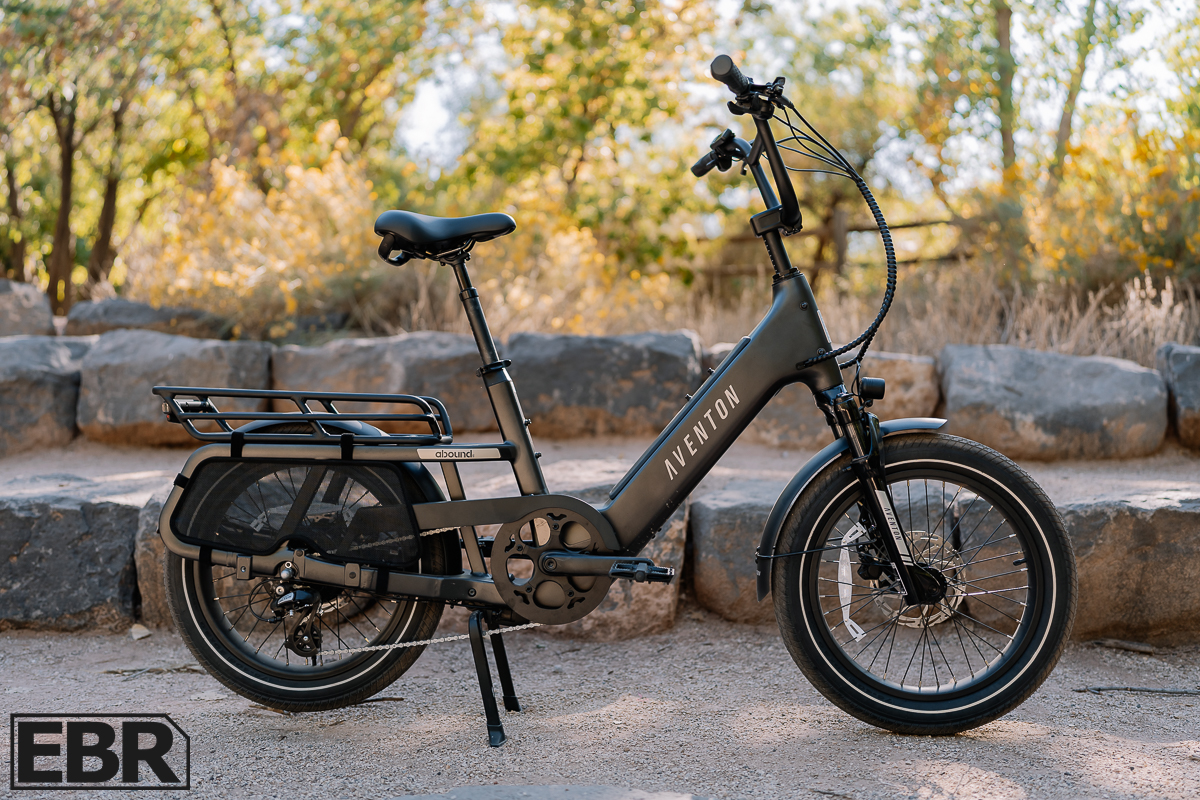
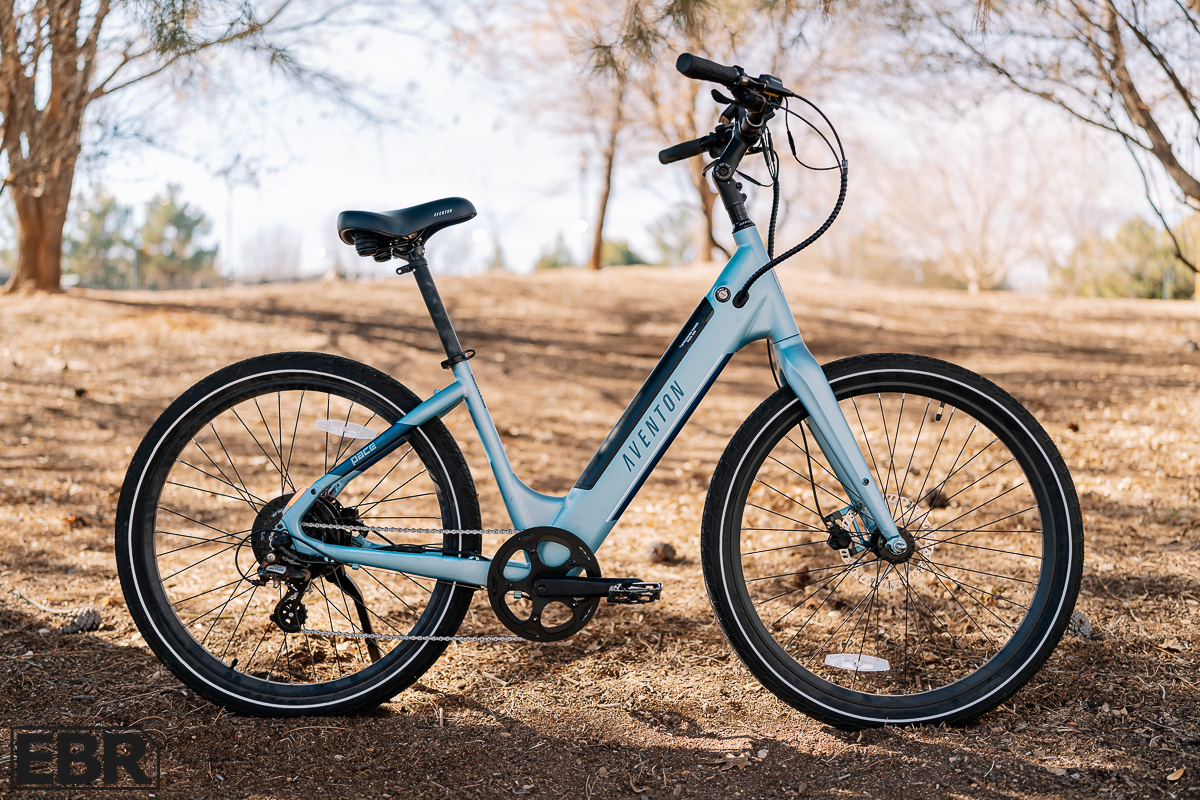
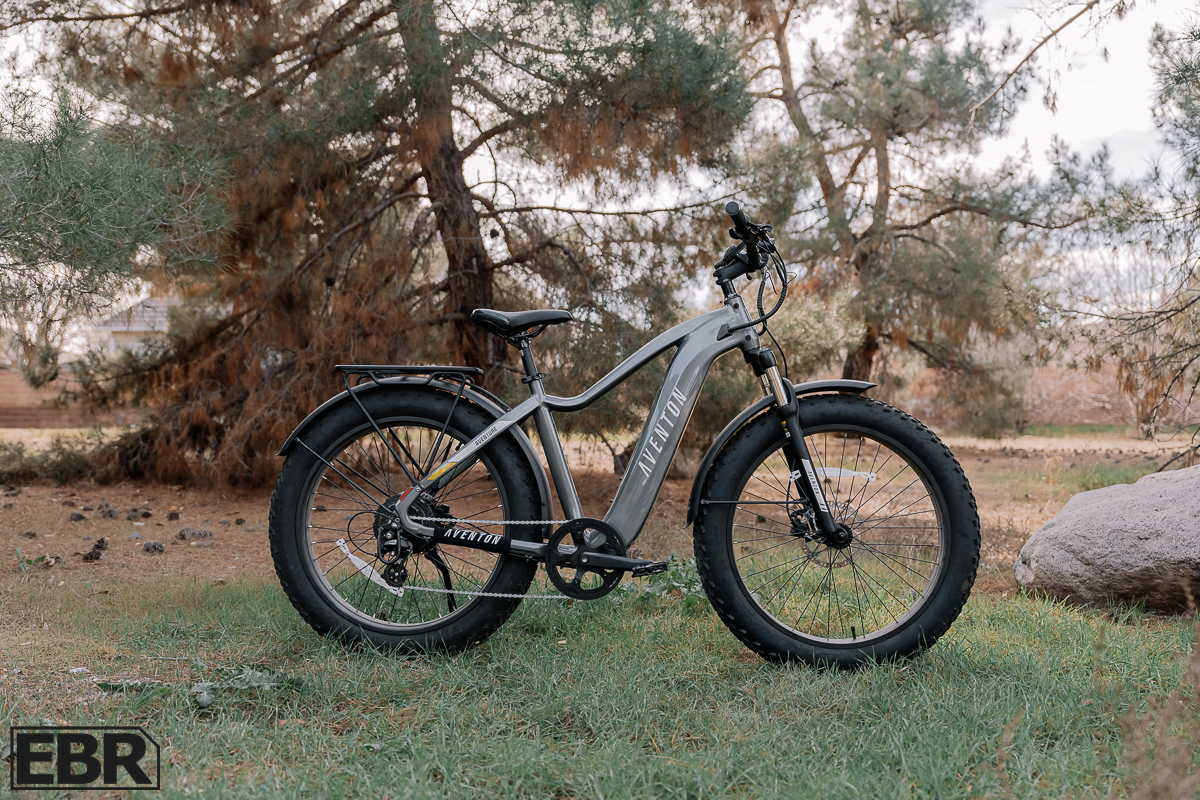
Mike says
Your you tube video and the evening sun lighting makes this e-bike look pink. Folks its NOT PINK. It’s purple. Medium dark purple when you see it in person, with a hint of a metallic finish.
Court says
Thank you so much, Mike! I think the demo model I got to film with was also slightly different in color than the final production run. That happens sometime and I don’t always have a great way to indicate or even confirm it.
Tumalo Ted says
I’m comparing the 350 with the Treck Verve+, both weigh the same 46#. Which pedals easier in pedal only mode?? I’ve heard that geared hubs have less drag than mid-drives, is that the case here?? The 350 has a huge price advantage, but one year less warranty and 7 speeds vs. 9 speeds.on the Trek. If price wasn’t a consideration, which bike do you prefer, Court?? Are the tire widths approx. the same?? Much thanks for your feedback!
Court says
Hi Tumalo! I am not sure if Trek currently has stock for the Verve+ because it was so popular this year. To answer your question though, most mid-drive motors won’t add any drag. Some of the Bosch Performance Line models use a reduction gear and have this tiny chainring that spins 2.5x per every crank revolution, and this adds some drag, but that is not the case for their Active Line motors, as used on the Verve+. The other type of motor with some drag is a gearless direct drive hub, which experiences some magnetic drag from “cogging” as the magnets repel the staters, even when the bike is not powered on. I personally don’t mind having 7 speeds vs. 9 speeds for most casual daily riding, but the Trek drivetrain, overall build, dealer availability and support is better than Aventon. I’ve also heard that the Pace can be difficult and time consuming to assemble. For me, I’d definitely prefer the Trek if price wasn’t an issue… and if it were available ;) you should be able to compare the tire measurements to see widths and diameter to compare, but tires can be swapped out pretty easily if you want something with different widths or maybe reflective stripes, puncture protection, or maybe a smoother tread (or knobby!) I hope this helps.
Tarja Varis says
Hi there, Court. You didn’t mention the kick stand like you usually do :o)
My local bike guy recommended the Pace. I am considering an e-bike moving up from my Townie 7D step thru, as I need help going up steep grades. Also, I am not too crazy about having the battery on the back of the bike like the electric Townie has. So, my question is about the step thru space. Is it something to consider where the battery is placed? Some batteries like the Pace are on the down tube. The Blix has the battery between the seat tube and rear tire. Does the battery placement change or reduce the size of the step through? Thanks very much for a reply.
Court says
Hi Tarja! I really like where Aventon placed the battery, but you are correct! Some competitors place it behind the seat tube, or even in front! Have you seen the RadCity for example? As long as you aren’t using a rear-rack mounted battery pack, the ride experience should be good. I hope this helps, and I think that Aventon, Rad Power Bikes, Ride1Up, or Surface 604 would all offer a good experience for you… these are all value priced products, so I hope it gives you some different models to compare and consider ;)
Tarja says
Do your reviews or do the bike makers provide a measurement of the step thru space. Some are wider looking then others. Thanks for all your great reviews.
Court says
Hi Tarja! Cool name… I always measure by hand from the ground to the point on the top tube (or main tube) just in front of the saddle where you’d actually stand over the frame. I don’t just copy the specs that manufacturers share. Hope this helps!
Jen says
You mentioned the ability to raise the speed in the settings. Is it possible to lower the set speed at each pedal assist level?
Court says
Hi Jen! I believe this is an overall setting that puts a cap on the maximum speed at which the motor will contribute. I do not think that this particular ebike system is sophisticated enough to let you adjust each pedal assist level… Some other systems that have smartphones will give you this ability though. Bosch, Yamaha, and Shimano come to mind. Those products tend to be much more expensive.
Paul McCabe says
I bought two 350 step-troughs and I believe I interchanged the batteries. Is this OK? How long is “prolonged period of time” in storage before I need to “balance” the batteries?
Manual states to balance the battery you need to charge for up to 12hrs. After each first 3 rides. Is that true? In charging, is it better to charge the battery on or off the bike?
Court says
Hi Paul! I’ve heard that long term storage should be cool and dry, avoid extreme heat. Cold isn’t as bad, but it will temporarily limit the range that the battery offers until the pack becomes neutral temperature again. As for charge level, I’ve heard that storing at 50% charged is best, so the battery isn’t strained. The worst is letting it get down to zero. I check my batteries every month or two to make sure they are still around 50% and then add some charge if needed. I hope this helps, I’m just sharing what I’ve heard and observed from ebike shops but am not a battery expert :)